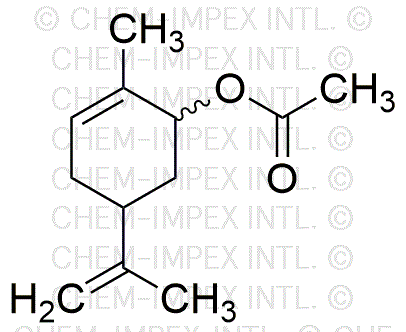(-)-Carvyl acetate is widely utilized in research focused on various practical applications across different industries.
- Flavoring Agent: Commonly used in the food industry, it imparts a pleasant aroma and taste to products like candies, baked goods, and beverages, enhancing consumer appeal.
- Fragrance Component: In the cosmetic and personal care sector, it serves as a key ingredient in perfumes and scented products, providing a fresh and appealing scent profile.
- Pharmaceutical Applications: It is explored in drug formulation for its potential to improve the delivery of active ingredients, making medications more effective and palatable.
- Research in Organic Synthesis: Utilized as a building block in organic chemistry, it aids researchers in synthesizing more complex molecules, contributing to advancements in material science.
- Insect Repellent Formulations: Its natural properties make it a candidate for developing eco-friendly insect repellents, appealing to consumers seeking sustainable alternatives.
General Information
Properties
Safety and Regulations
Applications
(-)-Carvyl acetate is widely utilized in research focused on various practical applications across different industries.
- Flavoring Agent: Commonly used in the food industry, it imparts a pleasant aroma and taste to products like candies, baked goods, and beverages, enhancing consumer appeal.
- Fragrance Component: In the cosmetic and personal care sector, it serves as a key ingredient in perfumes and scented products, providing a fresh and appealing scent profile.
- Pharmaceutical Applications: It is explored in drug formulation for its potential to improve the delivery of active ingredients, making medications more effective and palatable.
- Research in Organic Synthesis: Utilized as a building block in organic chemistry, it aids researchers in synthesizing more complex molecules, contributing to advancements in material science.
- Insect Repellent Formulations: Its natural properties make it a candidate for developing eco-friendly insect repellents, appealing to consumers seeking sustainable alternatives.
Documents
Safety Data Sheets (SDS)
The SDS provides comprehensive safety information on handling, storage, and disposal of the product.
Product Specification (PS)
The PS provides a comprehensive breakdown of the product’s properties, including chemical composition, physical state, purity, and storage requirements. It also details acceptable quality ranges and the product's intended applications.
Certificates of Analysis (COA)
Search for Certificates of Analysis (COA) by entering the products Lot Number. Lot and Batch Numbers can be found on a product’s label following the words ‘Lot’ or ‘Batch’.
Numéro de catalogue
Numéro de lot/série
Certificates Of Origin (COO)
This COO confirms the country where the product was manufactured, and also details the materials and components used in it and whether it is derived from natural, synthetic, or other specific sources. This certificate may be required for customs, trade, and regulatory compliance.
Numéro de catalogue
Numéro de lot/série
Safety Data Sheets (SDS)
The SDS provides comprehensive safety information on handling, storage, and disposal of the product.
DownloadProduct Specification (PS)
The PS provides a comprehensive breakdown of the product’s properties, including chemical composition, physical state, purity, and storage requirements. It also details acceptable quality ranges and the product's intended applications.
DownloadCertificates of Analysis (COA)
Search for Certificates of Analysis (COA) by entering the products Lot Number. Lot and Batch Numbers can be found on a product’s label following the words ‘Lot’ or ‘Batch’.
Numéro de catalogue
Numéro de lot/série
Certificates Of Origin (COO)
This COO confirms the country where the product was manufactured, and also details the materials and components used in it and whether it is derived from natural, synthetic, or other specific sources. This certificate may be required for customs, trade, and regulatory compliance.


